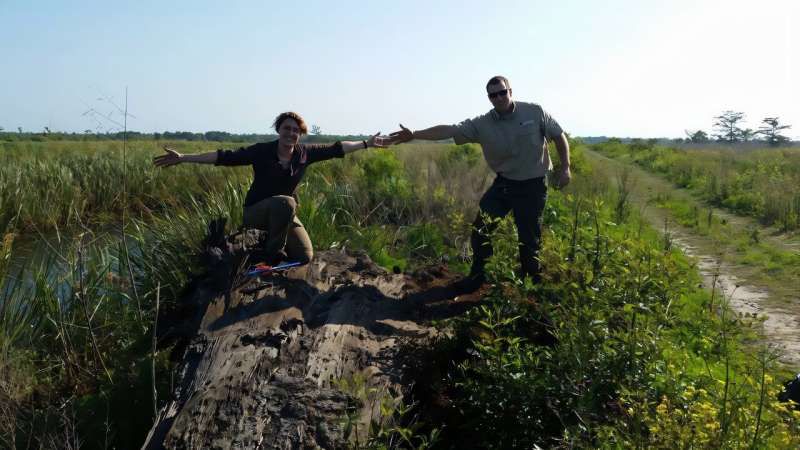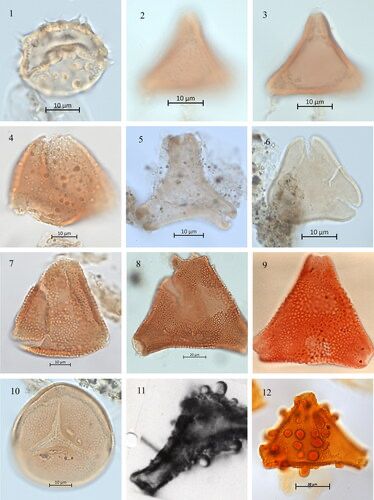
Palynologist, palaeoecologist, aerobiologist, Professor of Palaeoecology & Natural History @ANU | Long-term interactions between people and the environment | Fire | Pollen
https://researchportalplus.anu.edu.au/en/persons/simon-haberle ..
more
Palynologist, palaeoecologist, aerobiologist, Professor of Palaeoecology & Natural History @ANU | Long-term interactions between people and the environment | Fire | Pollen
https://researchportalplus.anu.edu.au/en/persons/simon-haberle
Reposted by Simon Haberle
@gilromera.bsky.social @hcadd.bsky.social @thatpollenguy.bsky.social
👉[https://lnkd.in/eWYtRsge]
#Wildfire #Palaeoecology #Archaeology #ClimateChange #FireEcology






Adeleye, M.A., et al. (2025) Palaeoecological Analyses Reveal Recent Fires Have Destroyed Late-Holocene Peat Deposits in Tasmania's Largest Ramsar Reserve. Austral Ecology, 50: e70087

doi.org/10.1111/aec....
theconversation.com/migrating-bo...

Each spring, billions of Bogong moths migrate up to 1,000 km
They use stellar cues and the Earth’s magnetic field for long-distance nocturnal navigation towards a specific destination.
www.nature.com/articles/s41...



Reposted by Benjamin I. Cook, Simon Haberle, Darío Martin‐Benito

A paleo study in Georgia suggests that might be a possibility: www.pnas.org/doi/10.1073/...



www.tandfonline.com/doi/full/10....
Fossil pollen from Goat Paddock Crater, Kimberley Plateau, are restricted to the Late Cretaceous Epoch.
=> meteor impact during/before the Mesozoic.
Reposted by Simon Haberle


Using process-explicit ecological models, the authors show that Moa persistence was not compatible with even low rates of hunting.
www.sciencedirect.com/science/arti...

www.weatherzone.com.au/news/hazy-mo...


Our daily pollen monitoring slide collected on the morning of the 27/5/25 shows the dense brown particles captured over the event. The fine particles of dust can be seen at 400x magnification.
Reposted by Simon Haberle, Allan D. McDevitt

Topics will encompass all corners of ancient DNA research, from humans to wildlife and sediments🧬🦣💀🦠
Save the dates ✅
Check the website icp2026.palaeogenomics.org and follow us for updates!
Reposted by John W. Williams


Outreach stretching 16,750km to the southern shores of Long Island (New York, USA)!
spotify.link/aRpInNUeCTb
Reposted by Simon Haberle, Andrew Hacket‐Pain

Reposted by Simon Haberle

🆓 doi.org/10.15184/aqy...
Reposted by Simon Haberle




The onset of human occupations at Bété I found to be ~150 ka, linking them with Homo sapiens. Plant wax biomarker, stable isotope, phytolith and pollen analyses all point to a wet forest environment.
rdcu.be/ebrSR

Extended and elevated tree pollen seasons in winter and summer are becoming increasingly common in Canberra.

A review of the potential of using magnetic susceptibility to create records of ancient Australian bushfires. Enjoy!
www.publish.csiro.au/WF/WF24093
Reposted by Simon Haberle

Reposted by Simon Haberle



One of the reasons may be the onset of She Oak (Casuarina) and Chinese Elm (Ulmus parvifolia) summer pollen season - a very CBR phenomenon.
This year (and last year) we saw a much earlier onset of these allergenic tree pollen in Canberra

The IPPD is a collection of Australian, Southeast Asian, and Oceanian Quaternary pollen records
datascience.codata.org/articles/10....


